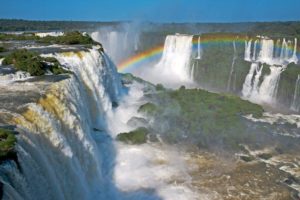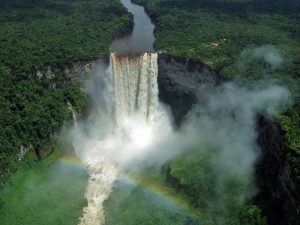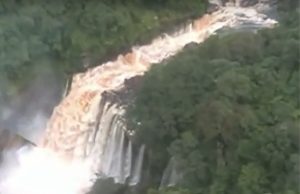World 🢖 South America 🢖 Guyana
Waterfalls 🢔 Geological wonders 🢔 Categories of wonders
Wonder
Kaieteur Falls
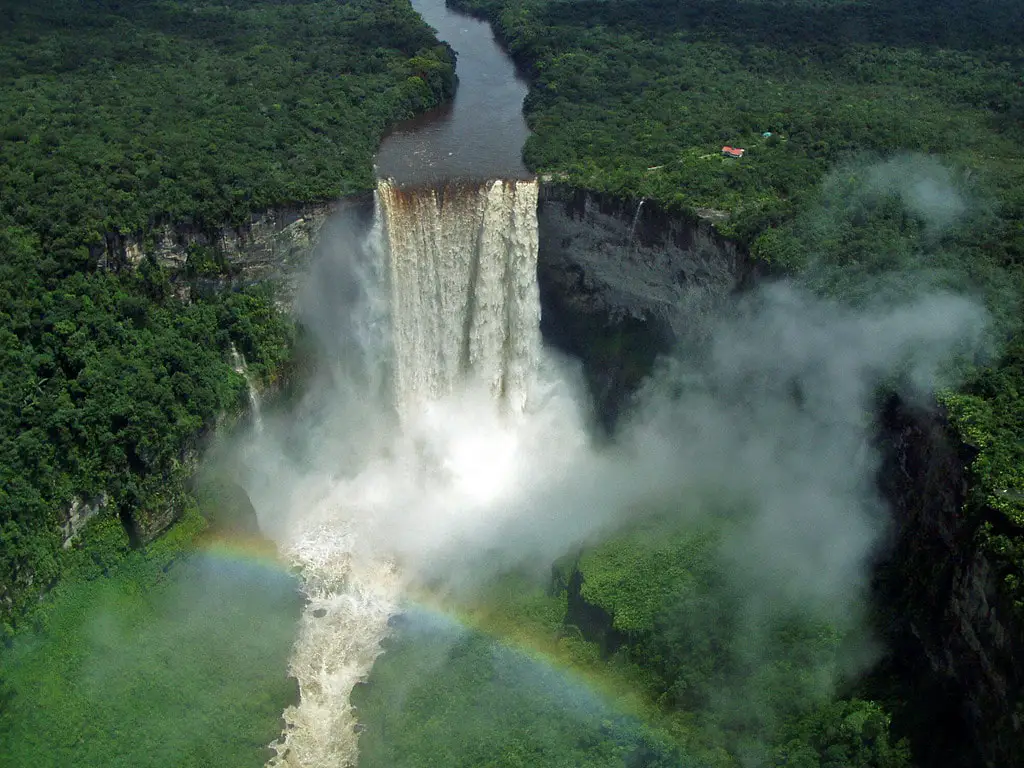
 In short
In short
There is little doubt that Kaieteur is one of the most impressive waterfalls on Earth. This fall has got all that an impressive fall needs – enormous height, width, free fall of big amounts of water, and – beautiful scenery around it. A big part of the impression is created by the fact that the surroundings of this beautiful monument of nature have not been commercialized.
 71.0%
71.0%
GPS coordinates
Location, address
Alternate names
Height
Width
Volume
Map of the site
If you see this after your page is loaded completely, leafletJS files are missing.
 In detail
In detail
The most exclusive waterfall in the world!
Kaieteur waterfall is very special due to the combination of several factors:
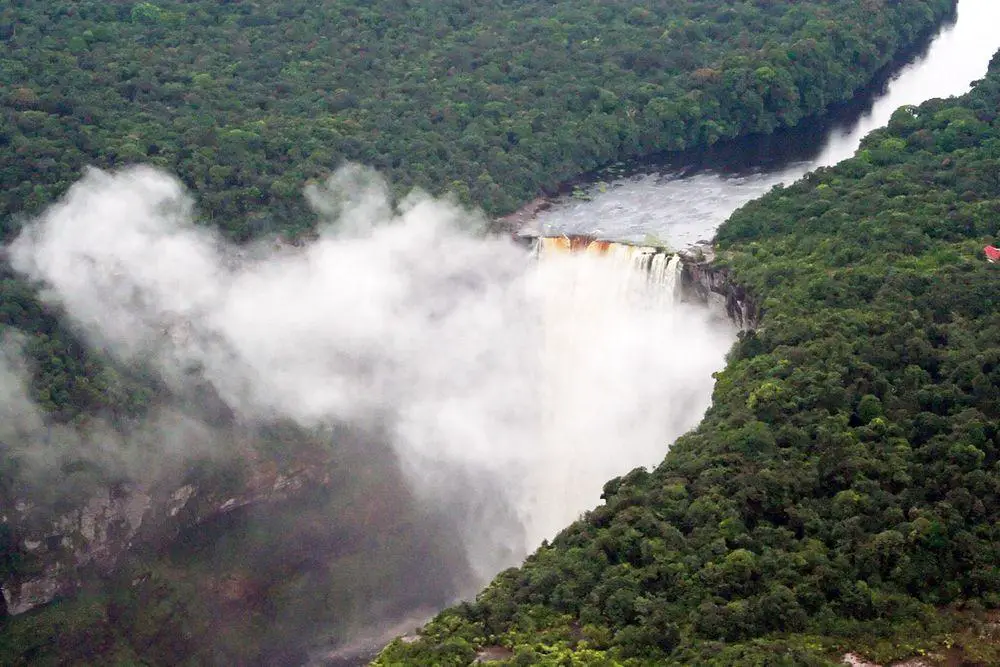
- Large height (251 m) – it is five times higher than Niagara Falls;
- Large width and large water volume – average width is 113 m and average volume – 663 m3 per second. Kaieteur is one of the most powerful waterfalls in the world – and bear in mind that most other contenders are lower and without tall plunges.
- Impressive free fall of water. The main plunge is 226 m high. Most waterfalls do not have such a high free fall of water.
- Beautiful scenery – primeval tropical forest around the falls. Many of the great falls of the world have altered landscapes which decreases their impressiveness.
- Feeling of exclusiveness. While most large waterfalls of the world are surrounded by crowds of tourists, Kaieteur is comparatively desolate. General tourists come here only by plane and when they arrive, they are left in private (especially on weekdays) with one of the most impressive sights in the world.
Description of Kaieteur falls
Kaieteur is located in the central part of Guyana Highlands, consisting of several billion years old rocks. This part of Guyana Highlands contains a higher ridge named – the Pakaraima Mountains, consisting of plateaus with steep sides.
Guyana is rich in waterfalls but this region is superior in this respect. Numerous powerful rivers fall here over the edges of plateaus.
Geology
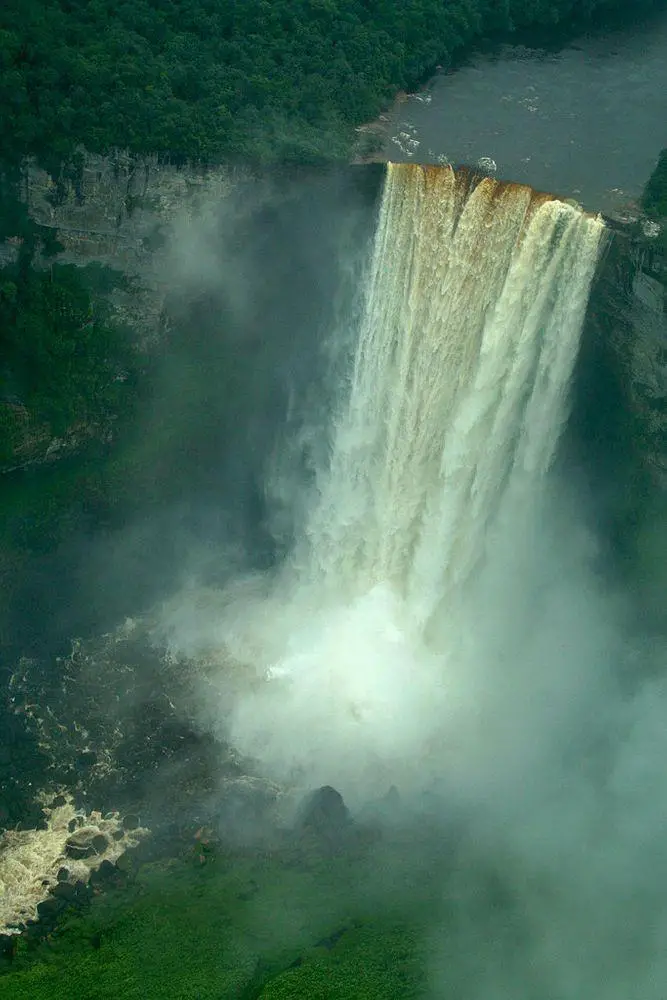
Kaieteur falls over a 6 – 10 m thick layer of conglomerate which overlies a softer layer of sandstone. Rebounding water is eroding the softer sandstone thus creating an overhang. Over time overhang falls down – thus the front of the waterfall is slowly retreating. A major part of the enormous escarpment has been created by this process – it is possible that the waterfall has retreated in such a way for several kilometers.
After the fall Potaro River flows through a deep, 32 km long canyon until it leaves the escarpment.
Size
Width of the river above the falls is approximately 120 – 130 meters. The stream is slow until a few hundred meters before the precipice water starts flowing faster and faster. The depth of the river close before the falls reach 4 – 5 m or, at flood time, even 6 meters. The volume of water is 663 m3 per second.
Waterfall itself is approximately 113 m wide, in flood time – up to 120 m. The basic part of the fall is a 226 m tall plunge.
As the dark reddish-brown water of the tropical jungle river falls down the precipice, it turns into bright white foam and mist. Water disappears into a roaring basin, hidden in an eternal cloud of mist.
Basin is approximately 200 m wide and 100 m long.
At the base of Kaieteur the force of the falling water creates a weird phenomenon – constant hurricane. There are constant waves in the small pond, the air is full of fleeces of foam gyrating chaotically. The wind is pulling the visitors and it seems that the day is grey and stormy. But – as one leaves the base of the falls – it turns out that the sun is shining and all trees stand calmly.
As the water leaves the basin, it gradually falls 25 meters in a short distance. Thus the full height of falls is 251 m.
Potarite
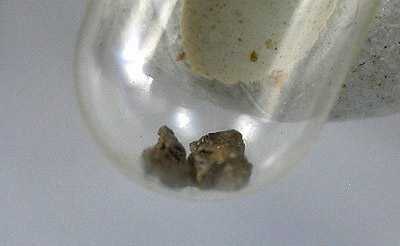
In 1924, while looking for diamonds (with some success!) there was discovered a new mineral in the canyon below the falls – potarite. This is an extremely rare and unusual mineral – a natural alloy of two metals – palladium and mercury (PdHg). Potarite is unsightly – small, heavy brittle grains, consisting of a metallic, opaque silver-colored mass. Later this mineral was found in some more locations around the world.
Another exciting discovery is one of the world’s smallest ferns – Hecistopteris kaieteurensis. This 2 cm long fern was discovered on the edge of Kaieteur in 1997.
Discovery by Europeans
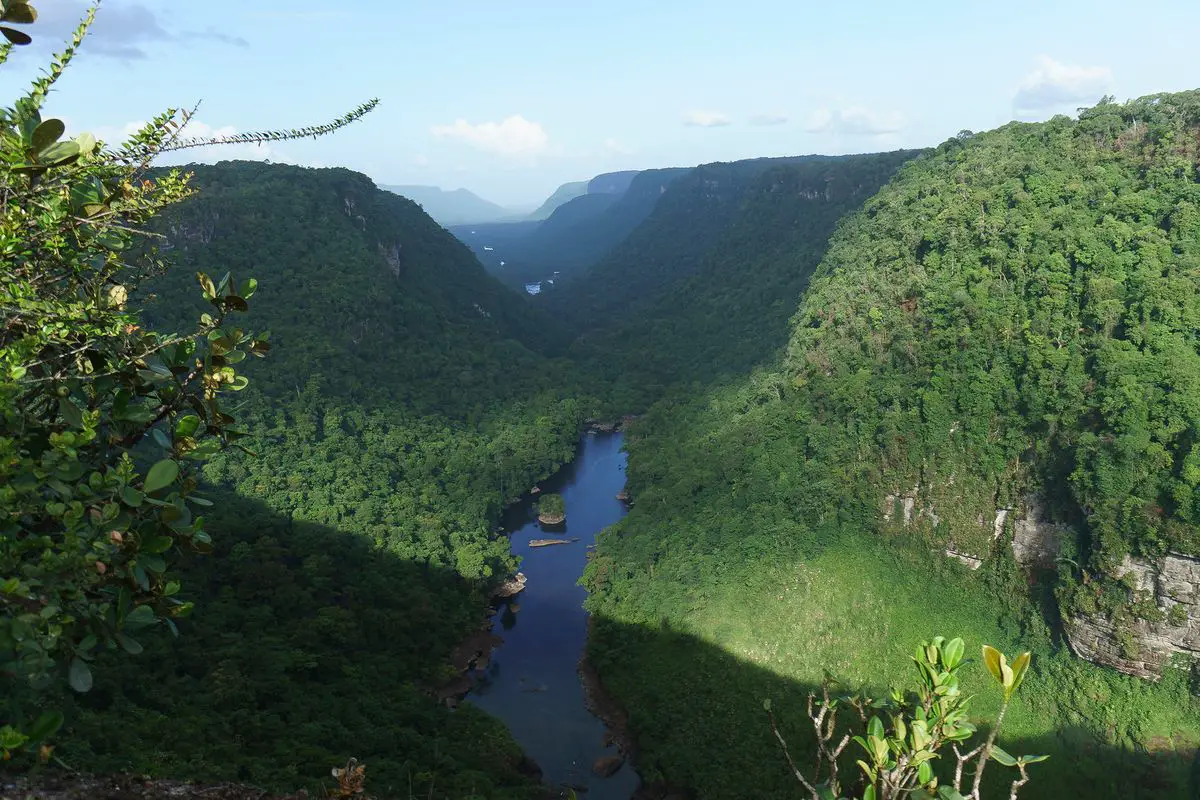
In the late 19th century British Empire had increased interest in the research of the mineral wealth of its possessions. Thus it was decided to investigate closer the little-known British Guiana as well – with attention on the research of rivers as natural waterways.
British geologists Charles Barrington Brown and James Sawkins were appointed to make these investigations in 1867. Sawkins did much work and retired somewhat earlier (in the summer of 1870).
Brown continued his work with excellence. Over six years period, he traveled some 3,500 kilometers by foot and some 13,000 kilometers in a boat, in rivers. The tireless explorer traveled nearly all the rivers of Guyana, made a geological reconnaissance, and discovered numerous beautiful landmarks.
His greatest and best known discovery took place on April 24, 1870. Brown together with seven local men heard of the fall already on April 23. April 24 was a grey day and, as Brown reached the rim of a precipice, he thought at first that the mist is coming from the rain. There though opened a view of one of the most unbelievable sights on the globe – a waterfall of gargantuan size falling deep down the precipice.
There was issued a scientific report “Report on the Kaieteur Waterfall”, published in the "Proceedings of the Royal Geographical Society of London", Vol.15., No.2. (1870-1871). He wrote in this scientific paper: "I was much struck with the beauty and grandeur of this fall, and regretted extremely that I could not remain longer to make proper observations of its height, width etc."
He returned to the waterfall the next year and made the necessary measurements.
Later Brown wrote several books, including "Canoe and Camp Life in British Guiana", 1876.
Falls of sacrifice or betrayal?
Beautiful natural attractions, for the most part, take an important role in the culture of local people. Kaieteur is not an exception – it is an important site for Patamona Amerindians. Indians do not want to approach the base of the falls.
There are several stories about the origin of the name of fall. Here will be given two very diverse ones.
Story of betrayal
This story was reported by C. Barrington Brown himself. When Brown after the discovery of the fall spent the night on the escarpment, Indian interpreter told the following story at the fireplace:
"Once upon a time there lived an old Indian at a village above the fall, an exceedingly feeble old man, whose feet became infested with chigoe fleas to such an extent that he gave his friends and relatives an immense amount of trouble in picking them out for him every morning.
So they determined to rid themselves of the nuisance, and accordingly placed the old man in a woodskin just above the edge of the fall, and shoved it out into the stream. The strong current hurried him to the brink and swept him over its foaming water, and he was seen no more.
But not long after, strange to relate, his wood skin appeared at the end of a small island, in the smooth stream just below our camp, in the form of a long slab of rock; while on a slope on the right-hand side of the fall, a large square rock represents his canister similarly petrified.
After this tragedy had been enacted, the Indians named the fall Kaieteur, which means "old-man-fall"." (2)
Story of sacrifice
Previous story is not very well suited to boost national self-confidence. But – there is another one, with more noble events, described:
People of Toshao were endangered by the raiding party of the savage Caribs. There was needed a sacrifice to appease the Great Spirit Makonaima. The old and revered chief Kai sacrificed himself – he took his canoe and paddled over the falls.
Old man and his canoe were immortalized by nature – there is a cliff formation near the falls formed like a man in the boat.
Thus falls got their name – "Kai-fall".
Biodiversity and protection
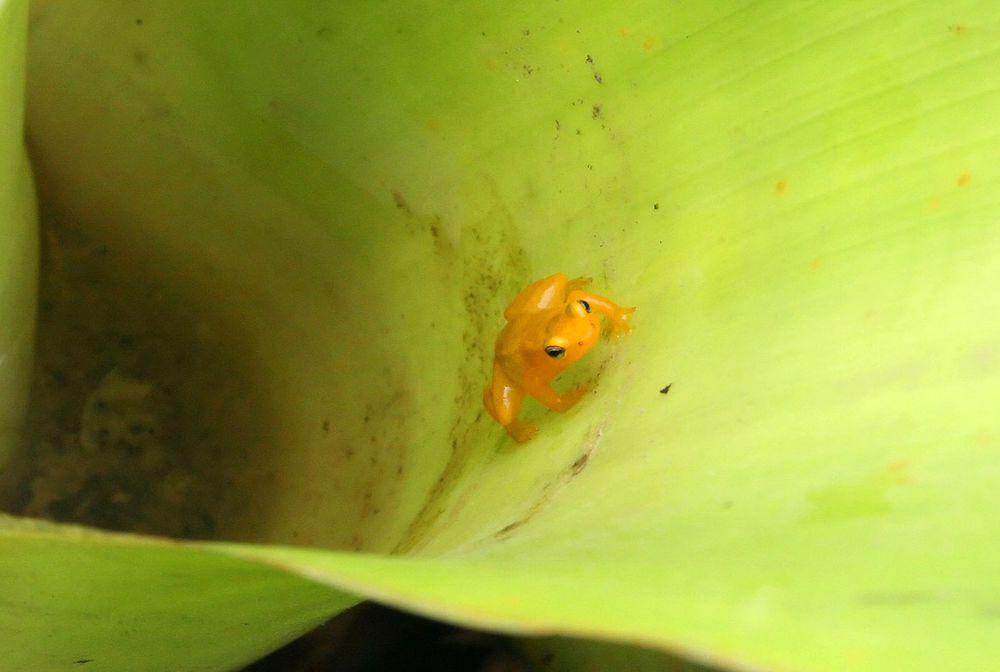
Surroundings of the waterfall are teeming with life. Here can be met numerous beautiful and rare plants, birds, insects and other forms of life.
Especially abundant life is seen below the falls, where eternal mist has been present for many thousands of years. Valley is covered with cloud forests containing numerous species which thrive in a very moist climate. Trees here are covered with a thick carpet of mosses, lichens, orchids, and bromeliads. Especially impressive is tank bromeliad Brocchinia micrantha, which grows up to 4 m high. Several endemic species of plants have been found here including a fern Hecistopteris kaieturensis. Most likely there are numerous plant and animal species which are not been discovered yet.
One can marvel at giant bromeliads with water held permanently between their leaves. There is even a frog living in these bromeliads – tiny golden dart-poison frog (Colostethus beebei).
Only in recent decades a diversity of life in Kaieteur National Park is conceived and the research in the park is ongoing and constantly bringing new discoveries.
White-chinned swifts (Cypseloides cryptus) live in the enormous escarpment and even behind the waterfall. During their flight, these birds even dive directly through the waterfall. Behind the falls the force of water has formed an enormous, inaccessible cave – thousands of swifts live in this safe habitat.
British Colonial Administration designated a National Park here in 1929 in order to preserve the natural beauty and rare species of plants and animals in the area. This is one of the oldest national parks in South America and the Caribbean. Initially, the area of the national park was 117 km².
After the pressure of the mining industry the park was downsized to a mere 19 km² in the 1970s but then expanded again in the 1990s to protect the watershed and to decrease the impact of mining. Now the park covers approximately 627 km² area. The administration of the park is located in Mahdia town. Most of the park is intact – nearly all tourists are seen only in a few square kilometers around the falls.
Tourism
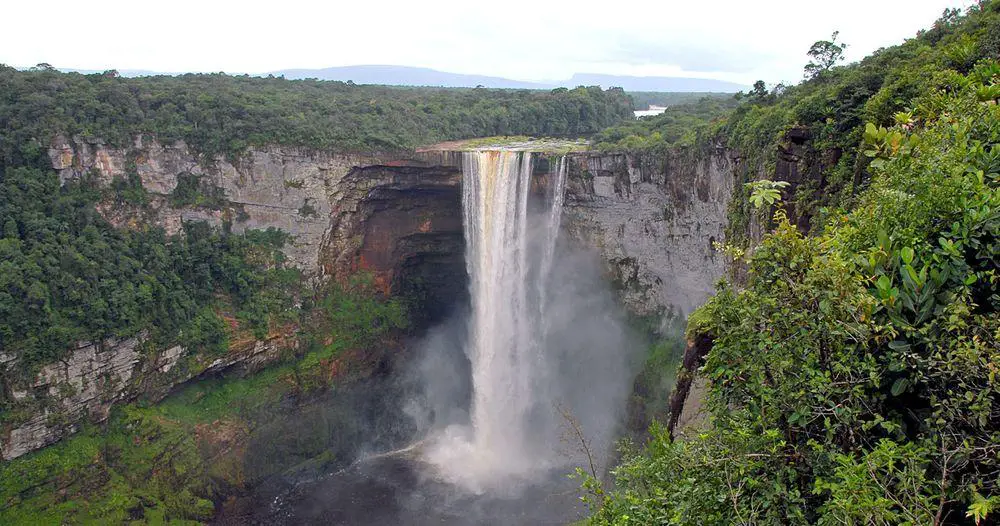
Kaieteur might be the most recognizable landmark of Guyana. Happily, since the time of discovery, the surroundings of this waterfall have not changed.
Number of visitors differs – but in general here come only some 200 people per month.
Kaeiteur is located in the middle of true wilderness, without roads, or luxury hotels. The high cliff has no guarding rails.
Waterfall can be reached by feet or by airplane.
The walk from Mahdia town lasts three days – and those who did it, often consider this to be their life adventure. When the tourists reach the bottom of the falls, they make a strenuous ascent and are awarded by an incredible sight. There is a possibility to stay in a guest house near the falls.
There is a tiny airstrip near the top of the falls as well – and most tourists come here by air. Tour operators often offer two beautiful falls per day with an airplane – Kaieteur and Orinduik Falls.
References
- Kaieteur National Park. The website was accessed on 29 May 2010
- Charles B.Brown. Report on the Kaieteur Waterfall in British Guiana. Journal of the Geographical Society of London, Vol.41, (1871).
Kaieteur Falls are included in the following lists and articles:
 Linked articles
Linked articles

Top 10 waterfalls in Guyana
In Guyana are located more than 300 major waterfalls and rapids as well as countless smaller falls.
Wondermondo offers a list of the 10 most impressive of them.
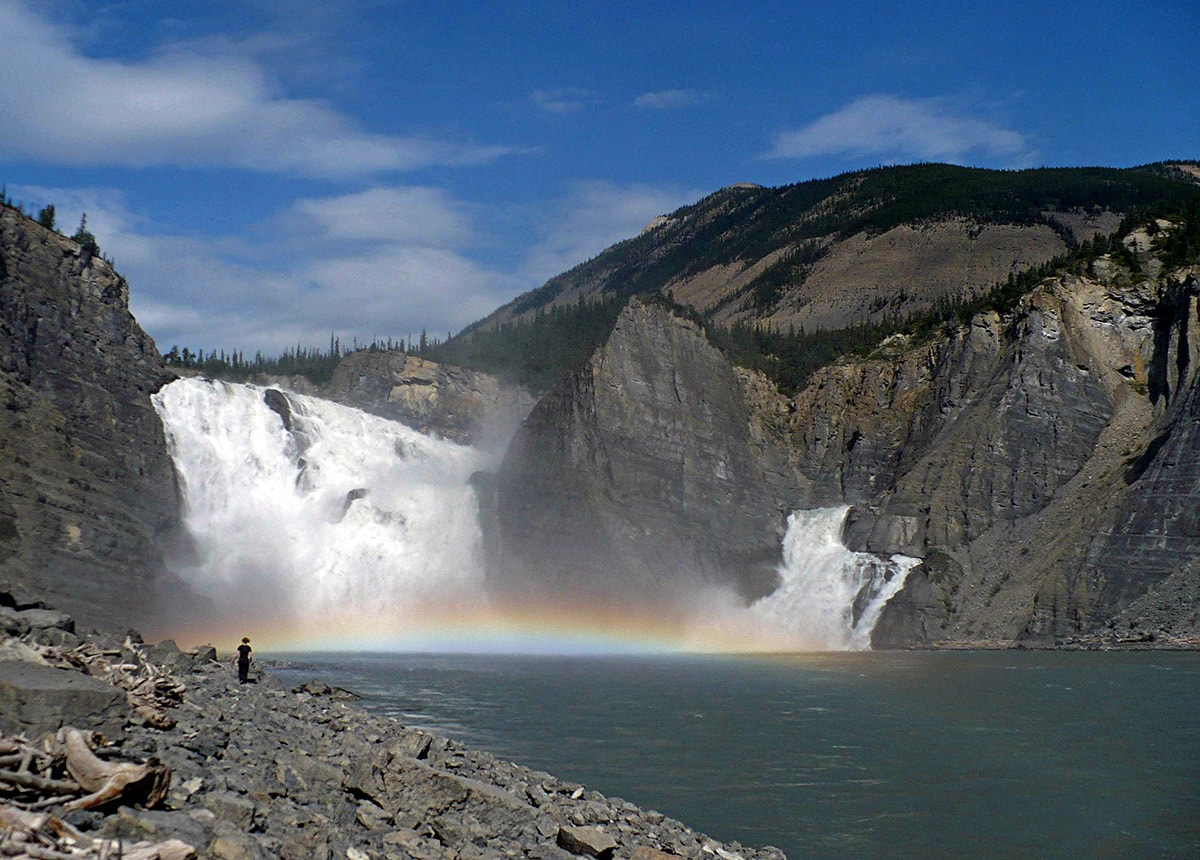
Waterfalls
Some of the most fascinating and awe-inspiring natural monuments are waterfalls or locations where a river abruptly changes its elevation.
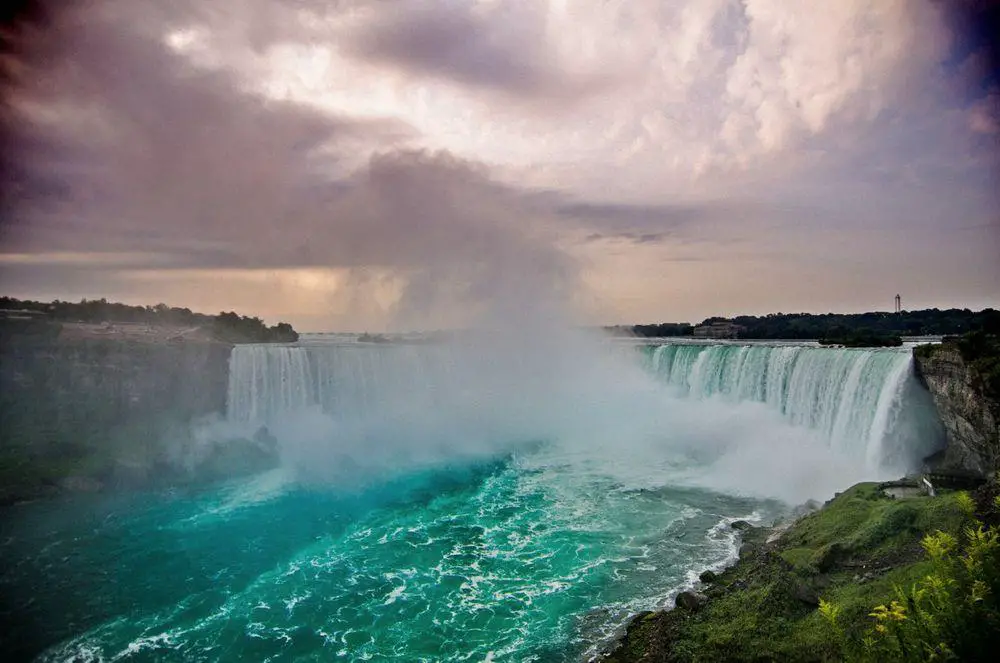
Top 10 waterfalls of the world
This list is Wondermondo’s attempt to select the 10 most magnificent waterfalls of the world based on height, plunge, amount of water, width, and general scenic beauty.
 Recommended books
Recommended books
Navigators Travel to Guyana
Navigators Travel to Guyana is the follow-up to Navigators Travel to Barbados written by Howard Liverpool. This time our intrepid explorers travel to Guyana and learn about the history and geography of the country. They also sample some of the local cuisines and have a scary encounter with a ram sheep.
Natural Wonders of the World
From the Rocky Mountains to the Great barrier Reef and everything in between, Natural Wonders of the World combines breathtaking landscape photography and illustrations with 3-D terrain models and other explanatory artworks to reveal what lies beneath the surface and explain the geological processes to show how the features were formed. Plants and animals that inhabit each environment are also included, making Natural Wonders of the World a complete celebration of our world.

